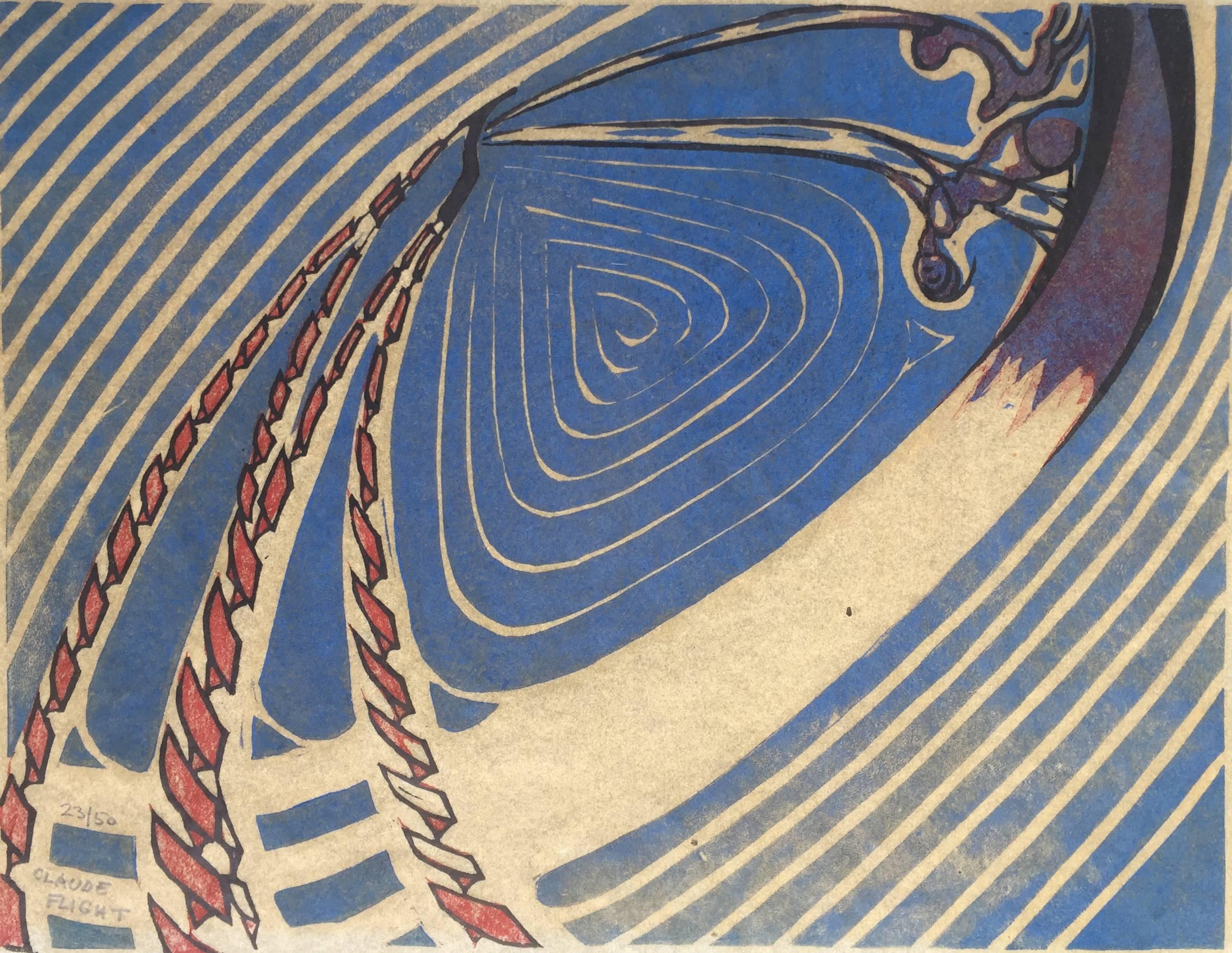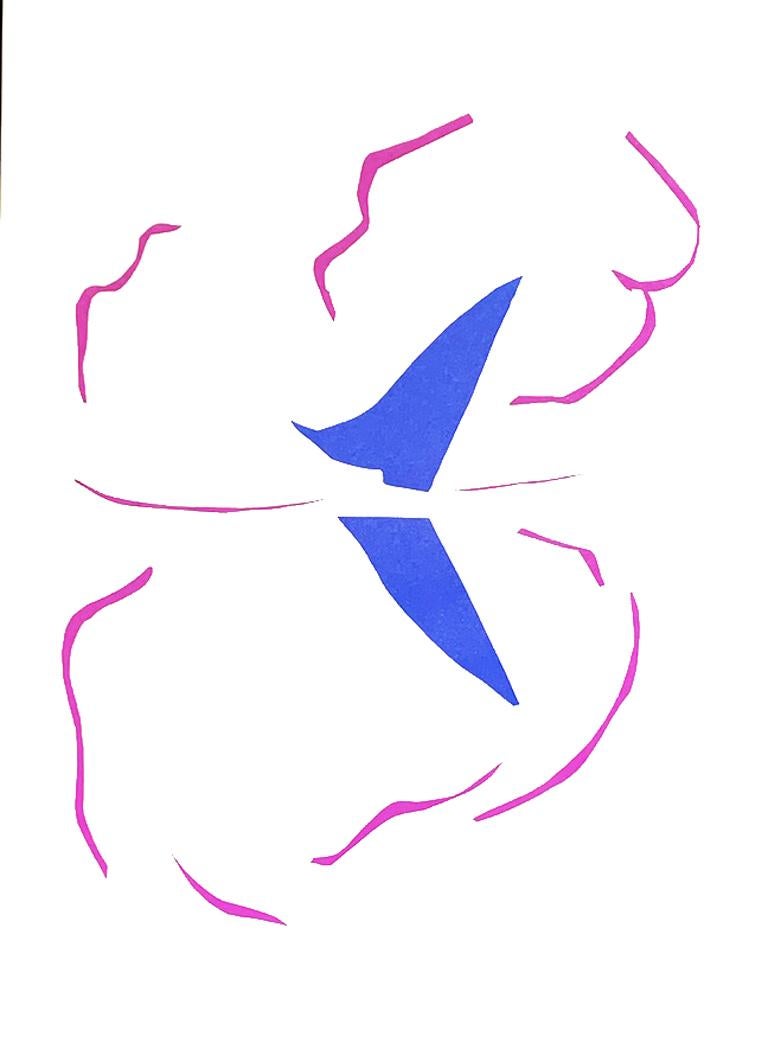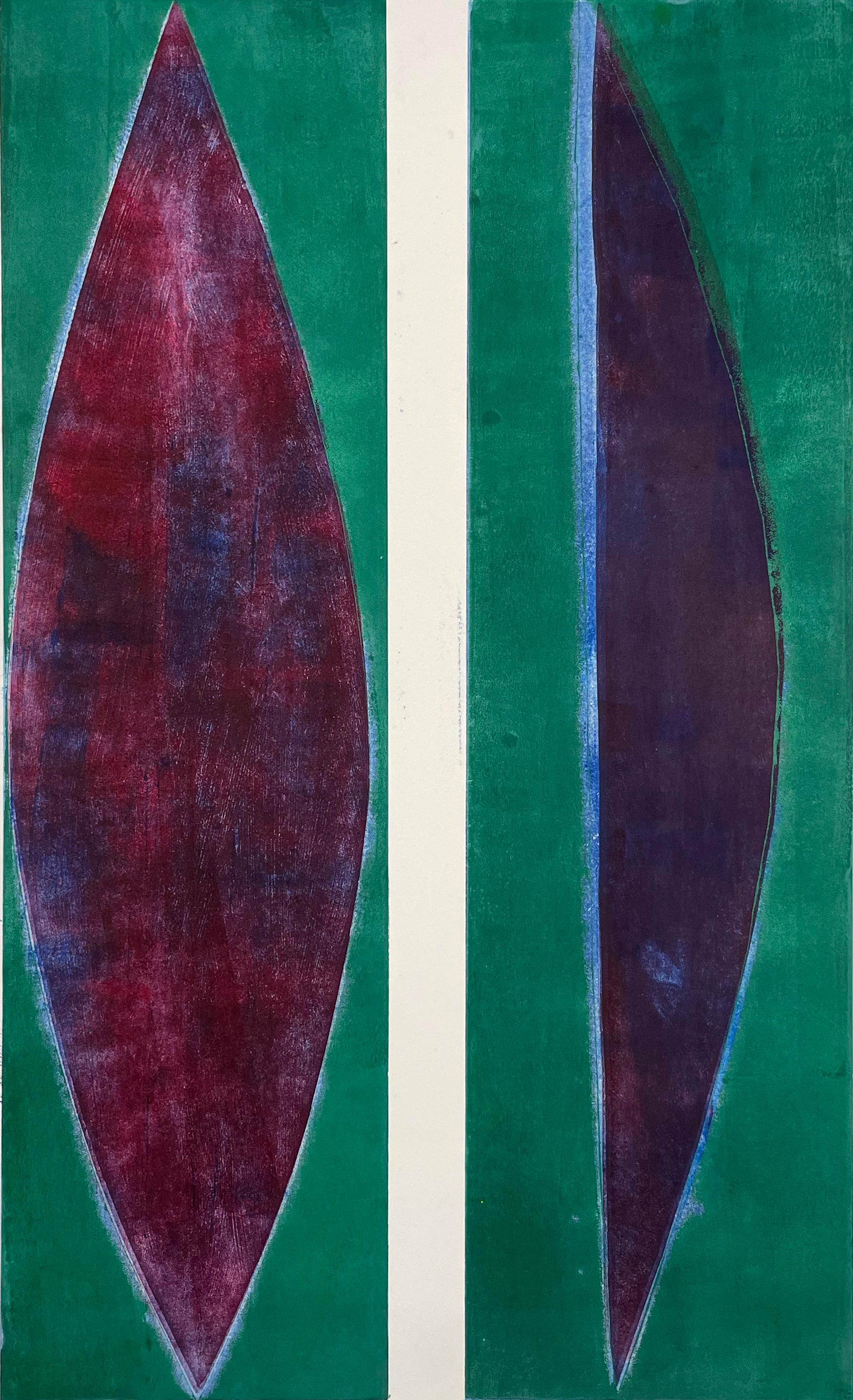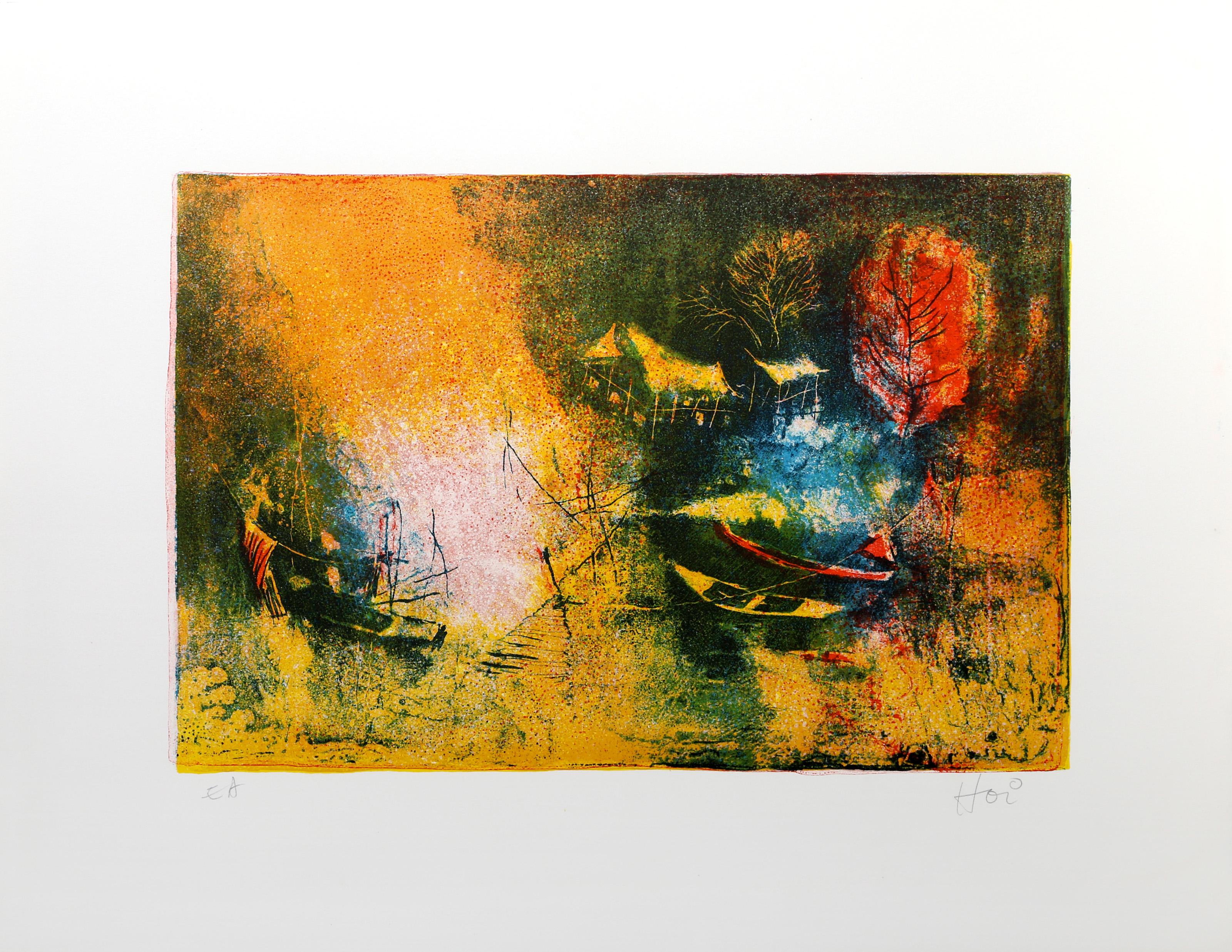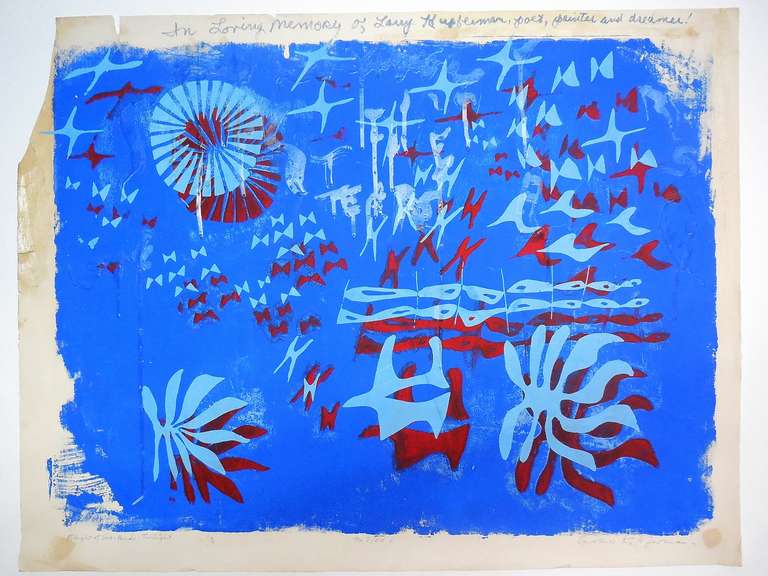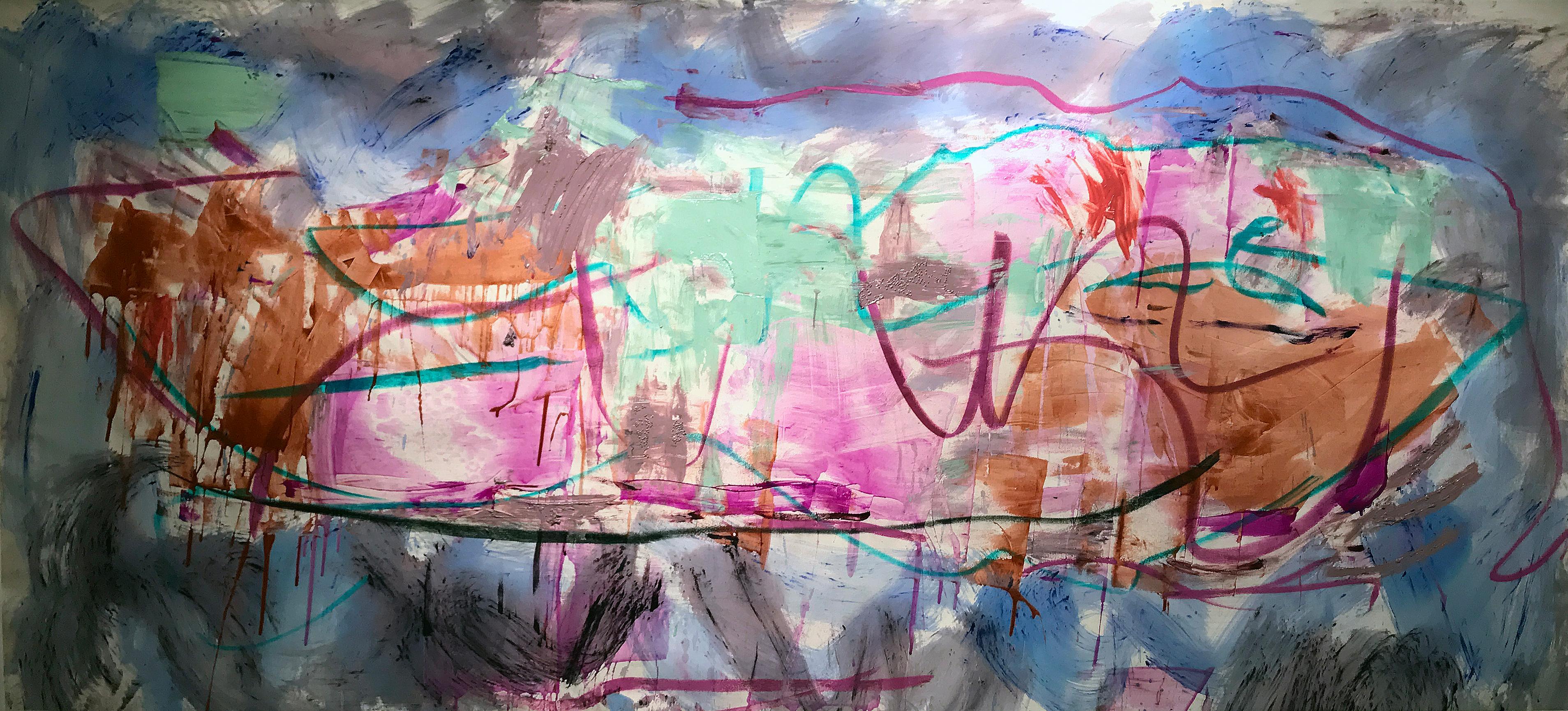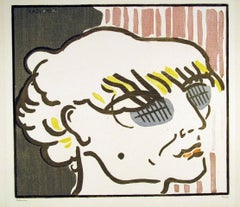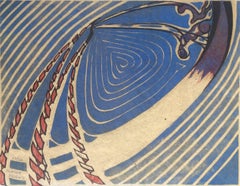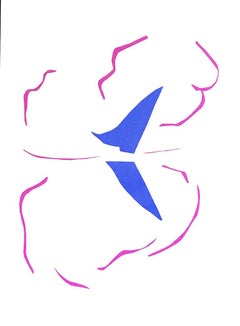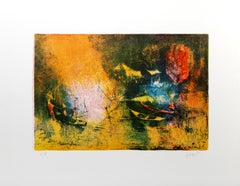Want more images or videos?
Request additional images or videos from the seller
1 of 5
Claude FlightSwing Boats1919
1919
$25,000
£19,405.98
€22,012.52
CA$35,696
A$39,334.13
CHF 20,401.96
MX$467,826.57
NOK 258,079
SEK 241,765.30
DKK 164,400.44
About the Item
Claude Flight (1881-1955), Swing Boats, circa 1919-1921, color linoleum cut on very thin Japan paper, signed and numbered by the artist lower left. In very good condition, with the full colored margin outside of the borderline (with slight imperfections typical of these British futurist linoleum proofs, i.e., border edge somewhat rough-cut, small loss upper left corner, a printing fold toward the middle of the image, slight wrinkling upper right). The sheet 10 x 12 3/4 inches.
Provenance: The Redfern Gallery, 27 Old Bond Street, London (with their label affixed to the mat).
A fine impression, with the colors fresh and balanced. Printed in cobalt blue and crimson oil paint and black printing ink.
Although the stated edition of this print is 50, according to the numbering of the artist, the print appears only infrequently on the market, and in widely varying condition and appearance – some impressions are very dark, some too light, some rather lacking in balance. We feel the present impression represents an excellent example of the print in virtually all respects.
Flight was a leader of the British Futurist movement, and a teacher at the Grosvenor School of Modern Art (his pupils included Lill Tschudi, Cyril Power, and Sybil Andrews). Flight regularly exhibited at The Redfern Gallery, as well as abroad.
A swing boat, colloquially known as a “shuggy boat” in the north east of England, is a fairground ride in which pairs of riders pull ropes to swing back and forth. Swing boats were one of the earliest fairground rides, common in the Victorian era. The boats were originally powered by hand, but steam-driven versions began to be introduced in the 1880s. Examples of Victorian-style manually-operated swing boats are still popular and are generally seen in traveling “period” fairs.
- Creator:Claude Flight (1881-1955, British)
- Creation Year:1919
- Dimensions:Height: 10 in (25.4 cm)Width: 12.75 in (32.39 cm)
- Medium:
- Movement & Style:
- Period:
- Condition:
- Gallery Location:New York, NY
- Reference Number:1stDibs: LU51532698551
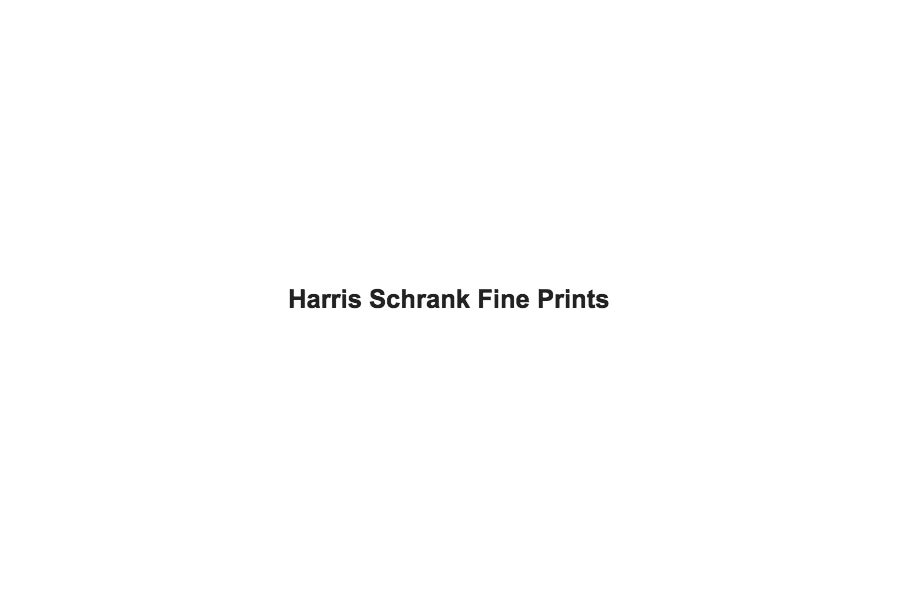
About the Seller
4.9
Recognized Seller
These prestigious sellers are industry leaders and represent the highest echelon for item quality and design.
Established in 2000
1stDibs seller since 2016
107 sales on 1stDibs
Typical response time: 6 hours
Associations
International Fine Print Dealers Association
- ShippingRetrieving quote...Shipping from: New York, NY
- Return Policy
More From This Seller
View AllSails
By Sybil Andrews
Located in New York, NY
Sybil Andrews (1898-1992), Sails, linocut in colors, 1960, signed (twice), titled, and inscribed “TP” in pencil. Reference: White 50. In good condition, two sheets, each image 7 1/...
Category
1960s Futurist Abstract Prints
Materials
Linocut
$30,000
Lassitude
By Jean-Emile Laboureur
Located in New York, NY
Jean-Emile Laboureur, Lassitude, 1912, woodcut, signed and numbered (24/35) in pencil. Reference: Sylvain Laboureur 682, third state (of 3). From the edition of about 35, published b...
Category
1910s Cubist Portrait Prints
Materials
Woodcut
Un Reve
By Louis Marcoussis
Located in New York, NY
Louis Marcoussis (1883-1941), Un Reve, etching, 1930, signed in pencil lower right and inscribed “2nd etat 1/2” lower left. Plate 1 of the portfolio Aurelia. Reference: Milet 55II, second state (of 4), before the edition (of 153 in the fourth state). In good condition, on a wove paper with full margins (a small area of discoloration below the border lower left, remains of prior glue right margin edge), 7 1/4 x 5 3/8, the sheet 15 5/8 x 9 3/8 inches, archival matting.
A fine impression of a rare proof, before the edition. This is one of the two proofs of the second state. After this state the plate was reduced in a third state (from 183 to 174 mm), and then steel faced for the edition.
Provenance: Libreria Prandi Reggio (blindstamp lower right corner)
Jean Cassou and Pierre Courthion asked Marcoussis to illustrate Aurelia, a novel by Gerard de Merval. This was the first album of their collection “Le Blanc et Le Noir,” edition chez Fourcade. Marcoussis was familiar with this novel, in which imagination and reality intermingle. In it de Merval wrote: “La Reve est une seconde vie.” (The Dream is a parallel life.) Marcoussis wrote of the print: “Il ressemblait a l’Ange de la Melancholie d’Albrecht Durer.” (It recalls the angel in Durer’s Melancholia...
Category
1930s Abstract Geometric Abstract Prints
Materials
Etching
La Rentree au Seminaire
By Jean-Emile Laboureur
Located in New York, NY
Jean-Emile Laboureur (1877-1943), La Rentree au Seminaire, 1897, woodcut, signed in ink lower right and inscribed “tire a 15 ex.” [also with monogram in the plate]. Reference: Laboureur 566, only state. In good condition, with some staining toward margin edge not affecting image, tack-holes at corners, 4 3/8 x 4 3/8, the sheet 9 5/8 x 8 1/2 inches.
A fine impression, printed on a grey/green wove paper.
A very early woodcut; the first time that Laboureur used a monogram within the plate.
This woodcut was made shortly after Laboureur learned printmaking from the famed printmaker – and woodcut specialist – Auguste Lepere; and the composition, with its ordering of a mass of marchers, appears to be influenced by Felix Valloton...
Category
1890s Abstract Geometric Figurative Prints
Materials
Woodcut
Etching 1916 Number II
By Wassily Kandinsky
Located in New York, NY
Wassily Kandinsky (1866-1944), Etching 1916 Number II, drypoint, signed in pencil lower right, titled, numbered (No. 9) and dated lower left [also with initials and date in the plate lower right]. Reference: Roethel 154, only state, edition of 10. In excellent condition (the barest handling fold at sheet edge), printed on a heavy ivory wove paper, the full sheet with full margins, 4 7/8 x 3 1/4, the sheet 17 1/2 x 13 inches, archival mount with window mat.
A fine fresh impression of this great rarity, printed in a dark brown ink.
Kandinsky created this drypoint (erroneously named Etching 1916) in early 1916 while staying with Gabriel Munter in Stockholm during the winter of 1915-16. This is from the second series of drypoints he made; the first was in the year 1913-14.
Provenance: Kornfeld Auction, Bern, June 2007.
The tiny size of this edition (10) makes this print a great rarity within the Kandinsky’s printed...
Category
1910s Abstract Abstract Prints
Materials
Drypoint
Kreuzende Segelschiffe 2 (Cruising Sailing Ships 2)
By Lyonel Feininger
Located in New York, NY
Lyonel Feininger, “Kreuzende Segelschiffe 2 (Cruising Sailing Ships 2)”
1919, Woodcut.
Prasse W175. Edition 275 unsigned for portfolio Die tunlte Jahresgabe des Kreises graphischer ...
Category
1910s Bauhaus Landscape Prints
Materials
Woodcut
You May Also Like
SWING BOATS
By Claude Flight
Located in Santa Monica, CA
CLAUDE FLIGHT (1881 -1955)
SWING BOATS 1921 (Coppel CF5)
Color linocut, signed & no. 23/50, 8 5/8 x 11”. Sheet 10 x 13” on thin paper tipped to black-b...
Category
1920s Futurist Abstract Prints
Materials
Linocut
Bateau
By Henri Matisse
Located in Fort Lauderdale, FL
Henri Matisse (1869 - 1954)
Bateau, 1952
Lithograph after a gouache decoupee from Verve 35/36
14 x 10.50 in
Category
1950s Modern Prints and Multiples
Materials
Lithograph
$1,000
Smooth Sailing
By Robert Roach
Located in Palm Springs, CA
Unique monotype, signed and numbered.
Artist Robert Roach worked in Santa Fe, New Mexico. His one-of-a-kind, abstract monoprints are inspired by the landscape, climate and light of ...
Category
2010s Abstract Abstract Prints
Materials
Monotype
Docked Boats, Abstract Expressionist Lithograph by Hoi Lebadang
By Hoi Lebadang
Located in Long Island City, NY
Lebadang (aka Hoi), Vietnamese (1922 - 2015) - Docked Boats. Medium: Lithograph on Rives BFK, signed "Hoi" and numbered in pencil, Edition: E.A., Image Size: 12.5 x 18.5 inches, Siz...
Category
1970s Abstract Prints and Multiples
Materials
Lithograph
Flight of Sea-Birds: Twilight
Located in Surfside, FL
Silkscreen on paper. with some sort of experimental poured stuff on it. there is some loss to the margin but the image is strong. edition 2/6.
During the 1930s, Lawrence Edward Kupfe...
Category
20th Century Modern Abstract Prints
Materials
Paper
Boat
By Francine Tint
Located in New York, NY
Abstract Canvas. Vibrant colors. Abstract yet you can see the boat within.
About the Artist:
Francine Tint is a New York based abstract expressionist painter. She studied paint...
Category
2010s Abstract Abstract Paintings
Materials
Canvas, Acrylic
$39,000
More Ways To Browse
Antique Boats
Antique Swing
Used Fairground Rides
Swing Boat
Paula Crane
Picasso Arnera
Picasso Print Signed Dove
Picasso Serigraph
Picasso Weeping Woman
Portfolio 9 1967
Rene Magritte Hand Signed
Robert Indiana Heliotherapy
Robert Indiana Love Heliotherapy
Robert Motherwell Chair
Robert Rauschenberg Harp
Rodolfo Arico
Roy Cross
Sam Francis Color Explosion
